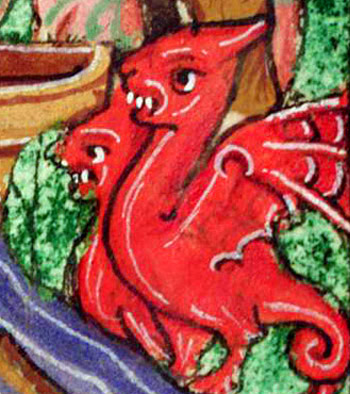Sir Isumbras
General Information
Plot Summary

Sir Isumbras is a rich and courteous knight, with a beautiful wife and three sons, who has forgotten that he owes his good fortune to God. One day, a bird sent by Christ reminds him of his sin and offers him a choice between suffering in youth or old age. Isumbras repents, and promises to serve Christ while he is young and strong. He calmly accepts his fate as his horse dies, his hawks and hounds flee and his property burns down. He and his family leave the county and wander where Christ leads them, begging for food.
As they are crossing a river, Isumbras’ two eldest sons are carried away by a lion and a leopard. Isumbras urges his wife and youngest son to accept God’s will, and the three continue to the Greek sea, where they find the war ships of a Saracen king. Isumbras refuses to convert in return for food and rejects the king’s offer to purchase his wife. She is forcibly taken from him, and he is left, badly beaten, with a cloth full of gold. Before the ships sail the pair is granted a final meeting, where she gives him half of her ring and tells him to search for her.
Distraught, Isumbras continues on his way, until a griffin steals his gold and his youngest son is taken by a unicorn. Left alone, he submits himself to God’s will. He joins a community of ironsmiths and spends seven years carrying ore and learning to make armour. When he hears that the Saracens are waging war against a Christian ruler, Isumbras rides a work horse into battle and defeats them, killing their king.
The Christian king thanks the mysterious knight and takes him to a nunnery. As soon as his wounds are healed, however, Isumbras dresses as a pilgrim, and continues to wander. He sails to the Holy Land and spends seven years living in poverty until another angel informs him that his sins are forgiven. He then travels to the court of a charitable queen, but weeps instead of eating the feast that is laid before him. Full of pity, the queen gives him a room in her castle, where he regains his strength and beats her best knights in a tournament.
One day Isumbras finds a nest containing his cloth and gold, which he conceals under his bed. When the jealous Saracens discover it, they show it to the queen, who realises that it belonged to her husband. Isumbras tells his story and shows her his ring. She produces her half, and the couple are reunited. Isumbras is crowned and decrees the kingdom Christian, but his men desert him when he is attacked by the Saracens. As he and his wife prepare to fight, they are joined by three knights, riding on a leopard, a lion and a unicorn. The five of them defeat the Saracen host, and the knights reveal that they are Isumbras’ sons, sent back to him by God. The family rejoices, and conquers the lands of another three Saracen kings, crowning Isumbras’ sons and converting their inhabitants. When they die, their souls all go to heaven.
From: M. Mills, Six Middle English Romances London: J.M. Dent, 1992.
Manuscript: British Library, MS Cotton Caligula A.ii
Manuscripts
Click a title below to search for all romances in that manuscript.